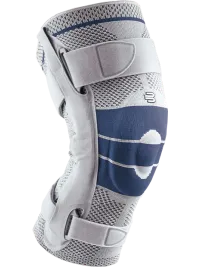
Stretched or Torn Neck Ligaments
Let OrthoSouth Help You Get Back in the Game
Neck sprains and strains usually occur when the neck is bent or rotated in an abnormal way. This results in stretched or torn ligaments in the cervical portion of the spine.
Symptoms
If you have a neck sprain, you may encounter various symptoms, such as:- Pain in the back of the neck that intensifies with movement
- Pain that becomes more pronounced a day or two after the injury rather than immediately
- Muscle spasms and discomfort in the upper shoulder area
- Headaches radiating from the back of the head
- Increased irritability, fatigue, trouble sleeping, and difficulty concentrating
- Numbness in the arm or hand
- Stiffness in the neck or a reduced range of motion (side to side, up and down, or circular)
- Tingling or weakness in the arms
Treatment
At OrthoSouth, we approach all sprains and strains with a consistent treatment strategy, regardless of their location in the body. Neck injuries, in particular, tend to heal gradually with the right care and time.
- To support your healing process, you may need to wear a soft collar around your neck. This will help relieve pressure on the ligaments and provide the necessary support for your head.
- Over-the-counter pain relievers such as aspirin, acetaminophen, ibuprofen, or naproxen can effectively alleviate pain and reduce swelling. Additionally, muscle relaxants may be prescribed to help ease any spasms you might experience.
- For the first few days following your injury, applying an ice pack for 15 to 30 minutes at a time, several times a day, can significantly help reduce inflammation and discomfort. Remember to wrap the ice pack in a towel to protect your skin from direct contact.
- While moist heat can be beneficial for loosening tight muscles, it's important to limit its application to no more than 20 minutes at a time.
- As your injury begins to improve, other treatments may be beneficial. However, these should only be initiated under your doctor's supervision and may include:
- Gentle massage of the affected area
- Ultrasound therapy
- Cervical (neck) traction
- Aerobic and isometric exercises (resistance exercises that engage muscles without movement)
- Formal physical therapy
You can learn more about Neck Sprains on the AAOS Orthoinfo Website
